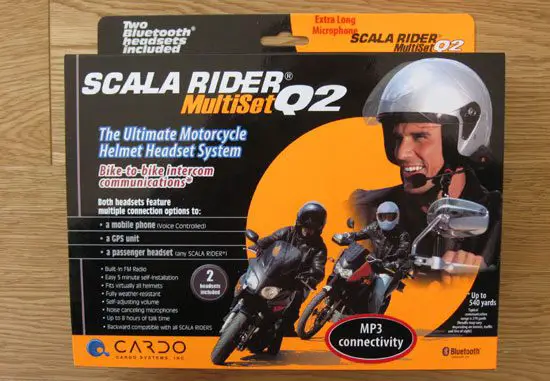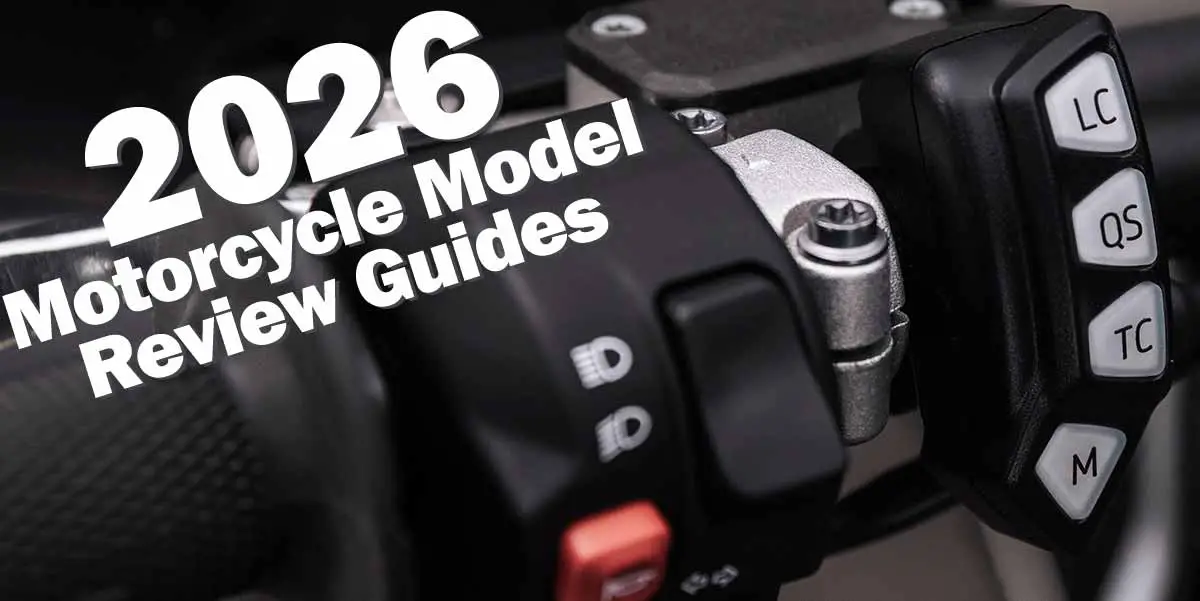
Cardo Scala Rider Multiset Q2 Motorcycle Helmet Headset System – Road Testing
Page 2 of 4

Cardo Scala Rider Multiset Q2 Motorcycle Helmet Headset System
Turning the headset on is a bit tricky at first try. The button is flush on the unit so there is no way to feel where it is. It turns out that the Control Button (which operates the power and the answer/end feature) covers approximately two thirds of the headset so it’s not actually too easy to miss. However, do keep the instruction book handy because as soon as you think you have all the hardware attached you might slip your helmet on before realising that you have no idea where the buttons are located.
The Multi-Connection button at the top of the headset (above the Control Button) is used to control the radio (on/off, change stations) and to initiate/terminate buddy intercom. The volume controls are simple up and down buttons that reside on the top edge of the headset.
Armed with the working knowledge of the headset, we are ready for our first test. We press the Control Button to get it to turn on. The great thing is that the headset is automatically set up with the microphones and speakers engaged so we can start a conversation right away. We hop on the bike and get ready for our first test ride.
We head out double-up and are quite excited at the thought of being able to converse while riding. There was only one rule: the passenger is not allowed to back seat drive! All joking aside, the communication system proved its worth in the first three minutes. As we crossed over the highway preparing to turn on to it, the driver was watching the road ahead and not watching the parking lot of traffic on the highway below. The passenger had a keen eye and was able to suggest that we go a different route to avoid the road trouble. Disaster averted!
As we continued on our journey we truly enjoyed being able to converse on a ride for the first time. Conversation can be a beautiful thing (or at least it helps keep the passenger occupied on the back!). At first we were concerned with wind interference during our conversations. Both testers were wearing full face helmets and found that by tucking the microphone up inside the helmet there was no wind noise. They also tested sticking the microphones way out of the helmets and it did indeed produce some interference. The voice was still easy to hear, there was just a bit of noise in the background. When the microphones were outside of their helmets but very close to their necks there was in effect no wind noise and we suspect that open faced helmets would be similar to this setup. It seems that as long as the microphone is kept close to the face or neck, wind noise is minimal or non-existent.
After enjoying a chat it was time to test the radio function.
If you would like Total Motorcycle, North America’s leading motorcycle information website to do a test ride and ride review of your motorcycle or scooter models just contact us for information or to book a date, location and time. It is a great way to promote your model and your company to over half a million visitors worldwide each month for no cost! Contact us today to inquire.



